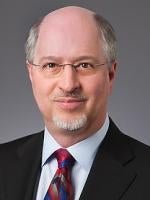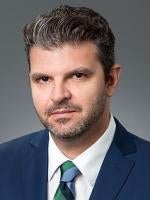San Francisco (January 11, 2018) – The final day of the 2018 JP Morgan Healthcare Conference gave us food for thought about the topic of healthcare navigation, as well as updates on the home health sector. Post-acute has become the focus of more attention, especially with the recently announced purchase by Humana of Kindred’s home health business. Genesis Healthcare’s presentation today also shared that they (the largest skilled nursing facility (SNF) operator in the U.S.) were at 84.6% occupancy and, given the growth in senior citizens, expected the SNF industry to run out of beds somewhere between 2020 and 2025. That’s a daunting forecast and clearly also emphasizes the importance of home health. But first, let’s look at the interesting topic of patient engagement and healthcare navigation.
Healthcare Navigation or Curation? – Castlight’s presentation today highlighted the company’s transition from a transparency focused product to healthcare navigation. Per CEO John Doyle, the company’s total addressable market opportunity is about $8 billion, of which $5 billion is health navigation services for employees and dependents of large, self-insured employers, $1 billion is for health navigation for fully insured beneficiaries and $2 billion arises from wellness (smoking cessation, weight management, diabetes management, etc.). The thesis voiced by Castlight is that healthcare – and specifically the employee base of large U.S. employers – needs a hand with guiding and supporting consumers/patients as they access and purchase healthcare. In part, this is because of the proliferation of healthcare access points, treatment modalities and the ever-growing (and often confusing) gusher of Internet healthcare information. If care is needed, does the patient go to a retail clinic, their primary care physician, a specialist, an urgent care center, an emergency room? Or do they use telehealth – and if so through their local health system, through a national healthcare telehealth provider or through a behavior or disease specific app? The myriad choices are enough to lead to “analysis paralysis,” but wait, there’s more. Doyle noted in his view that typical consumer behaviors don’t always port well to healthcare. The same consumer who would heavily research and negotiate for a new car purchase likely will not do the same thing when faced with healthcare choices. So, what then to do?
Clearly, the answer being proposed by many is to assist consumers with healthcare navigation. We saw that to some extent with the healthcare navigators paid for through the Affordable Care Act to help people work through the process of selecting and signing up for exchange insurance (which program has now been reduced under the current administration). We see a different flavor of navigation with the toll-free 800 numbers used by many health systems, where consumers call a telephone number and talk with a nurse or a navigator to determine the best possible access point for them. But this is only the simplest type of approach.
Castlight enters into annual subscription arrangements with large self-insured employers and, for employees/dependents who engage with Castlight, builds a personalized profile that evolves over time, drawing in data from claims, pharmacy benefit management programs and multiple other sources. They do this using a “segmentation engine” and then apply a “recommendation engine” to build a personalized technology-enabled campaign to engage and offer support in scheduling appointments, managing wellness and disease issues (“did you know that your employer offers the following program for diabetics?”), screening for issues that qualify for employee assistance program intervention, and organizing (through third party entities) for financial wellness (checking insurance coverage, HSA management, FSA management and retirement planning. Castlight goes to market directly with its own sales force, but it also partners with Anthem, whereby Anthem can embed the Castlight offerings into a full-solution Anthem offering for Anthem clients. Doyle shared an example of the financial benefits of its programs, noting a 9% healthcare cost reduction for Castlight users at a major international food company. That 9% includes a 21% reduction in emergency room utilization by those users, a 22% reduction in advanced imaging procedure costs, a 9% reduction in office visit costs and a 9x increase in telehealth usage.
Another approach is to service consumers by working through health plans, like Pager does (Pager did not present at the conference). Pager, led by CEO Walter Jin, is an app-based interface with artificial intelligence allowing the user to talk with a Pager nurse. After assessment, the nurse assists with the selection of the most appropriate level of care and provider, whether by telehealth or otherwise. Pager has been working with New Jersey Blue plan Horizon Healthcare Services to help members determine appropriate access to care.
Looking at this from a higher level perspective, the interesting questions here relate to the concepts of navigation and curation. With the traditional definition of navigation, a person knows where they want to go and they need help (such as from a map or a guide) to determine the most efficient, scenic or safest way to get to their intended destination. Implied in this is that the person has a clear destination or objective in mind. As we know in healthcare, this is not always the case for consumers in the healthcare system.
Contrast this with curation, which in the most commonly understood instance is what happens in museum exhibits. Unlike the general collection of the museum which allows you to walk around through a broad range of items and decide what you want to look at, a curated museum exhibit has the curator (essentially, the architect of the exhibit) decide what the focus and intended message of the exhibit will be and populate the exhibit with art that fits that focus and message. If you choose to go to the exhibit, you implicitly are accepting that you will view what the curator has selected for you to view. Your choice is to go or not to go and how much time to spend in the exhibit (i.e., how engaged you choose to be).
Now, looking at another example of navigation versus curation, there is Netflix. Yes, you can use Netflix for navigation – I want to see a specific movie and will navigate through Netflix to find and view it, either through a search function or by browsing the categories constructed by Netflix. But, if you are not searching for a particular film, you then fall into the category of curation. Like discussed above with the Castlight personalized profile, Netflix uses your viewing history, your data and your demographics to construct your personalized profile and make recommendations for you. Sometimes it can be incredibly helpful by making you aware of possible films to view that you never would have known about or come across. Other times, it just doesn’t work and feels imposed or artificial or even laughably wrong (such as when a teenager in your family uses your profile and you then have to endure weeks of very unusual recommendations). When done right, curation and recommendations can be very powerful and can create a very engaged consumer and a personalized experience. But, curation also implies necessarily a narrowing of the options available, which can be good and effective, or which can be negative. We all have read stories in the press recently about how many people are “narrowcasting” their news and information flow and only looking to a limited number of ideologically similar choices, often reinforcing biases. Put another way, there’s the old saying that to a hammer, everything is a nail. When applied to healthcare, the equivalent analogy is that if you go to a surgeon, surgery will be recommended.
So, while navigation and curation can be very effective at solving the first order problems – supporting and enhancing access, engaging patients and reducing healthcare costs – the question that has to be asked is exactly who is doing the curation and what impact does that have on the quality and cost of healthcare? Curation by a health plan, by a hospital, by a telehealth provider or by artificial intelligence (IBM Watson Health’s presentation yesterday discussed providing data-driven treatment choices) could result in very different recommendations and outcomes. It is something for both the healthcare industry and the U.S. population to consider carefully.
Home Health – LHC Group presented this morning at the conference and addressed their joint venture model, their proposed merger with Almost Family and recent regulatory happenings in the sector. LHC has about half of its volume coming from its joint ventures with health systems, and, when combined with Almost Family, will have 76 joint venture partnerships with 331 hospitals. The two primary strategic areas of benefit from the Almost Family transaction, aside from scale, are a large presence in Florida and Almost Family’s personal care business (which was not material for LHC). Larger Medicare Advantage payors are becoming more interested in the personal care offering as a way to address cost control and social determinants. Moving to the regulatory side, CMS has formed a TEP that includes significant industry participation to develop the next proposed rule with major changes to the sector reimbursement approach. Reportedly, this is the first time for industry inclusion at this early stage. The first group call will be January 25, and the first group meeting will be February 1. It is not anticipated that the work group’s efforts will necessarily be included in the July 2018 release of the 2019 rule.




 />i
/>i

